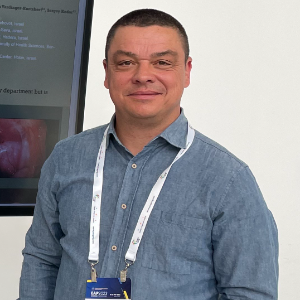Title : Laparoscopic repair of congenital diaphragmatic hernia is feasible in peripheral hospital
Abstract:
Background: Laparoscopic repair of congenital diaphragmatic hernias can be done in suitable infants and children with good long-term results. The benefits include a lower risk of infection, less intra-abdominal adhesions, and early recovery while being a “scar-less“ procedure.
Materials and methods: Three patients are described: a 9-months-old infant with a late presentation of Bochdalek left diaphragmatic hernia, and 2 more patients with Morgagni congenital diaphragmatic hernia, a 1-year-old infant, and a 3-year-old toddler. All procedures were performed in an abdominal approach using 3 and 5 mm ports, and a 5 mm 30 degrees camera. Suturing of the diaphragmatic defect was done with unabsorbed materials (Ethibond® 4.0).
Results: All patients recovered quickly and uneventfully, no intra-operative complications were noted, and the patients were discharged between the 3rd-6th postoperative day. The follow-up period is now between 4-25 months and so far there is no evidence of recurrence.
Conclusion: Laparoscopic surgery is used more and more in infants and smaller cavities by pediatric surgeons. Laparoscopic repair of congenital diaphragmatic hernias in infants and toddlers can safely be performed in peripheral hospitals by skilled pediatric surgeons with good results.
Our follow-up period is relatively short, and because of the relatively common recurrence rate in those patients, 15-40% in different reports, both in laparoscopic and open repair, long-term follow-up is required.
The main objective of this study was to show that minimally invasive procedures in infants and toddlers are feasible in peripheral hospitals



